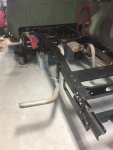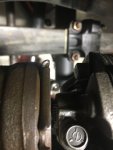DIVE DIVE
Well-known member
- 217
- 778
- 93
- Location
- Chesapeake, VA
Got the instrument panel finished up today. I had to replace the speedometer because the one that was there wasn’t responding. Come to find out it was an aftermarket one from china. I thought it looked weird but couldn’t figure out what it was, then I realized that it had an extra number, so you could read out 6 digits, not counting the 1/10 mile. Anyways, it’s trash. Replaced with an original from a buddy of mine down the street (freebie) who replaced his with a digital.
Got the fuel gage working too. I read a bunch of different people stating that the sending unit was 0-90 ohms. I exercised this unit after cleaning it up, and worked the sweeper for the variable resistor until it consistently read. I was able to get it to read about 9 ohms empty and about 104 ohms full. With those numbers it is dead on the empty mark and just over the full mark.
So at this point the instrument panel is completely operational.
I was also able to get the exhaust installed today and zip tied up since I haven’t finished painting the hangers yet.
Got the fuel gage working too. I read a bunch of different people stating that the sending unit was 0-90 ohms. I exercised this unit after cleaning it up, and worked the sweeper for the variable resistor until it consistently read. I was able to get it to read about 9 ohms empty and about 104 ohms full. With those numbers it is dead on the empty mark and just over the full mark.
So at this point the instrument panel is completely operational.
I was also able to get the exhaust installed today and zip tied up since I haven’t finished painting the hangers yet.
Attachments
-
60.2 KB Views: 34
-
59.8 KB Views: 37
-
112.9 KB Views: 40
-
56.1 KB Views: 43
-
88.9 KB Views: 41
-
64.6 KB Views: 36































